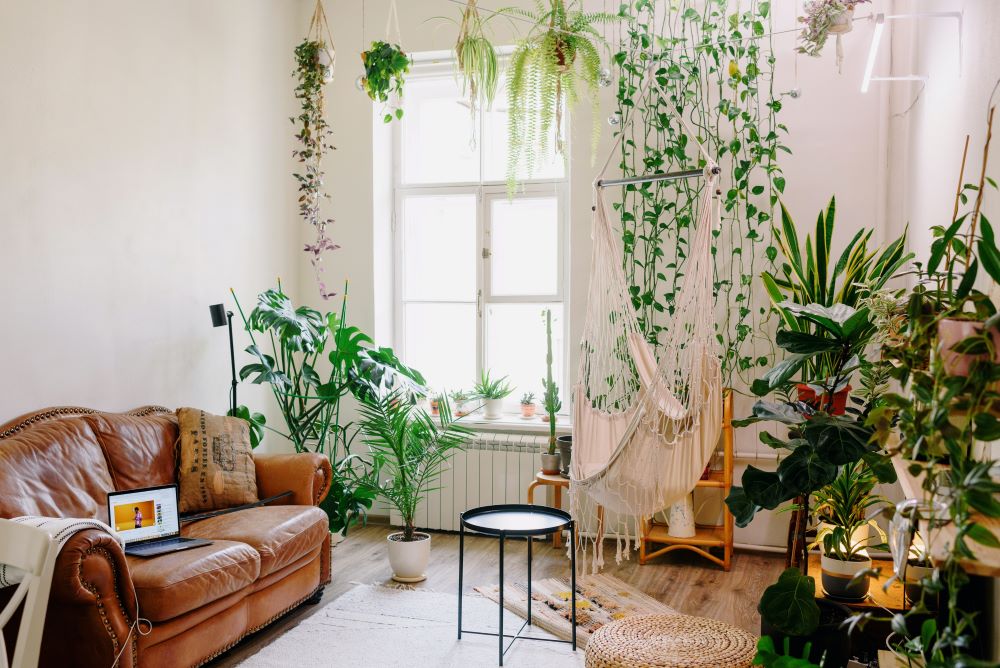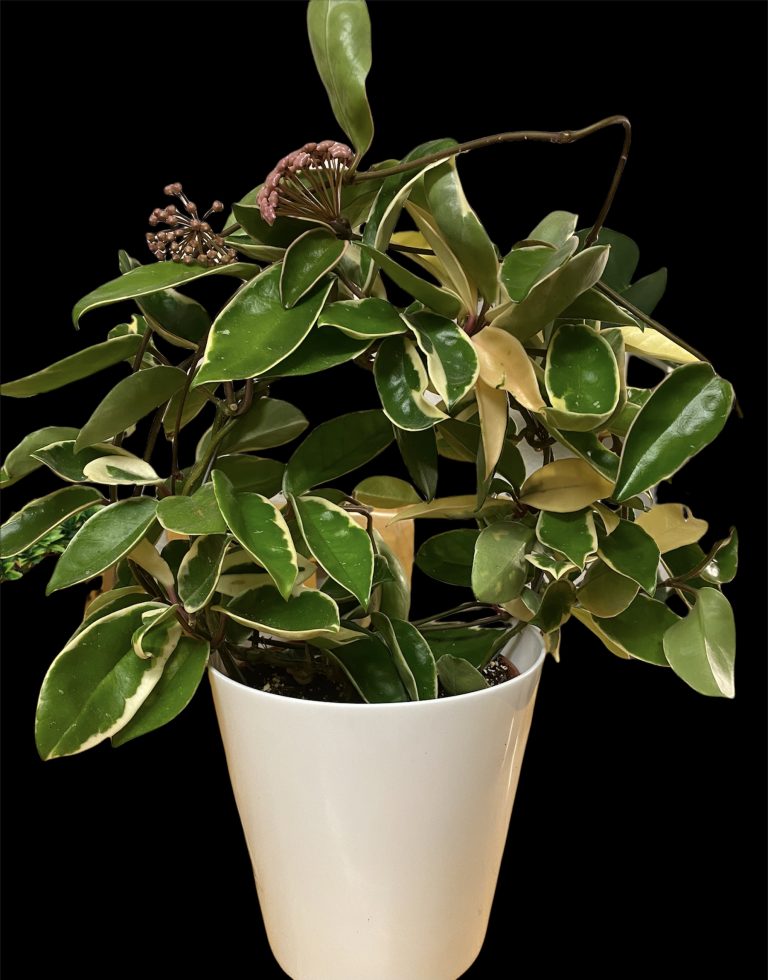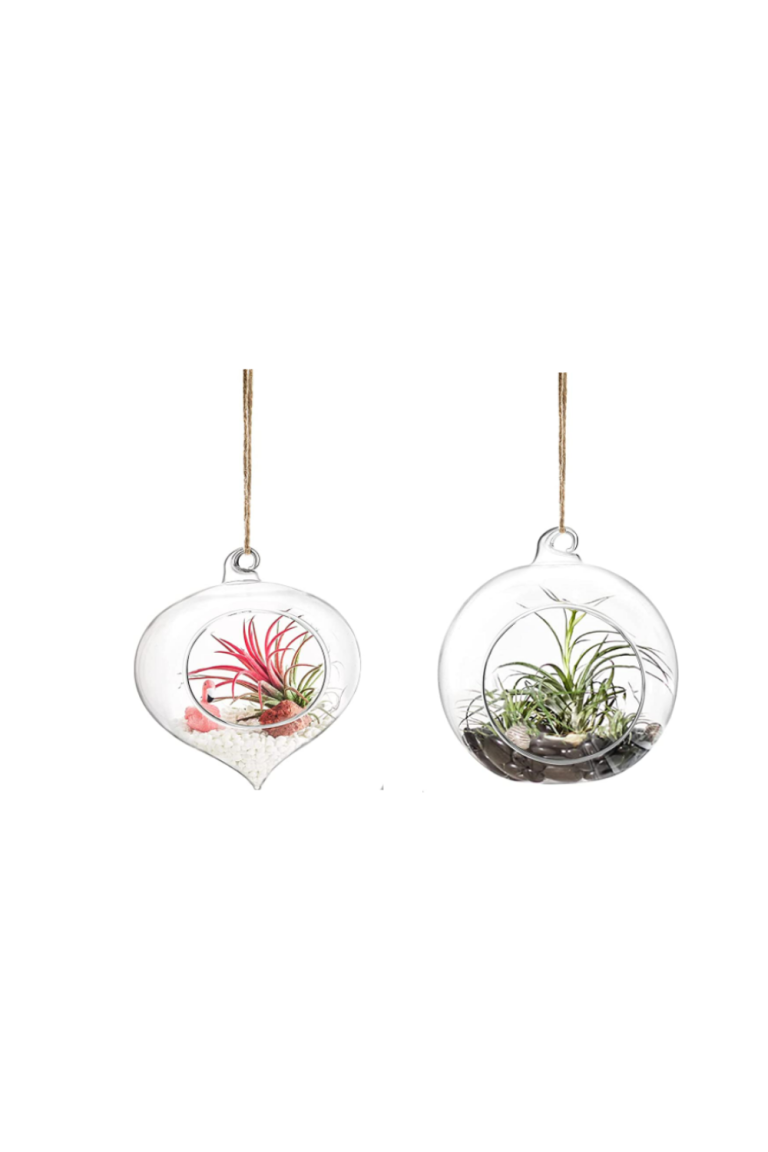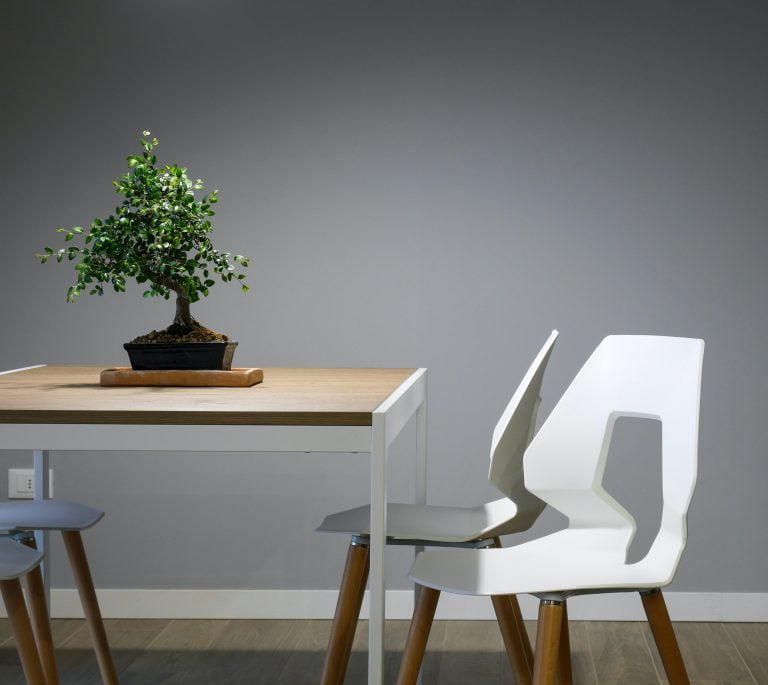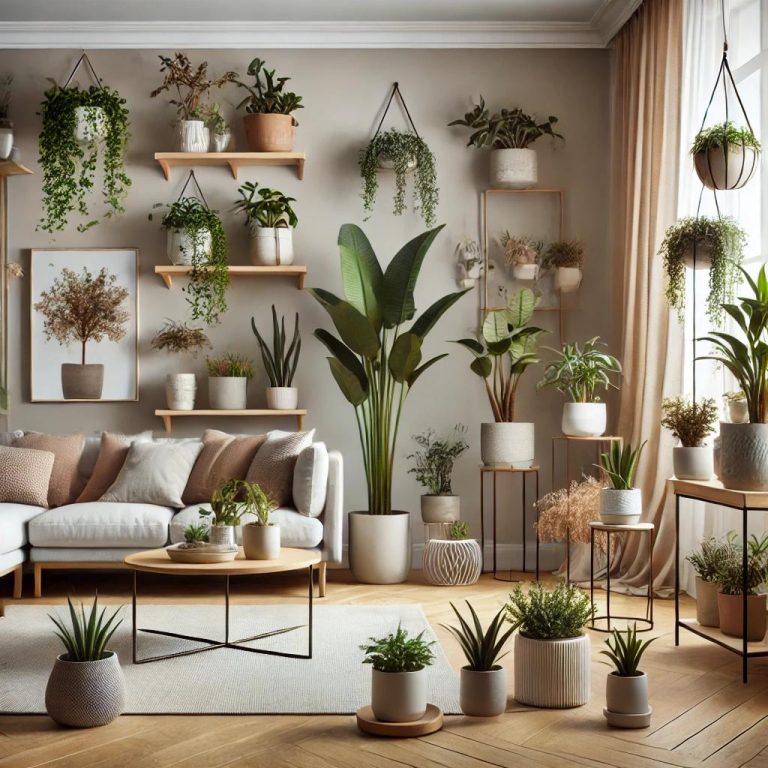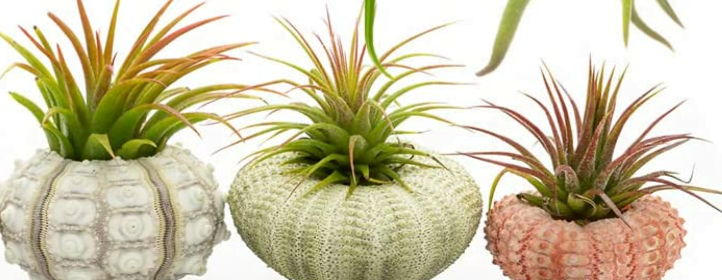Arrange Your Plants in Five Easy Steps
- Use varied heights: One of the easiest ways to make a plant display stand out is by using plants of varying heights. You can do this by placing tall plants at the back and shorter plants in front of them. Alternatively, you can use plant stands or shelves to create different levels of height for your plants.
- Play with colours and textures: Don’t be afraid to mix and match different plants with unique textures and colours. By combining plants with various textures, you can create an eye-catching display that will grab attention. For example, combining a soft, fuzzy plant with a spiky, textured plant will create a visually interesting contrast.
- Use unique containers: While traditional planters and pots can be beautiful, using unique containers can make your plant display stand out. Consider using vintage tea tins, repurposed glass jars, or handmade pottery to showcase your plants.
- Pay attention to lighting: Lighting is essential when it comes to displaying plants. Make sure your plants are getting enough light, and consider using a spotlight or accent lighting to highlight specific plants or areas of your display.
- Mix and match indoor and outdoor plants: Combining indoor and outdoor plants can add an extra element of interest to your plant display. By bringing outdoor plants indoors or displaying indoor plants outside, you can create a unique, cohesive display that will stand out. Just be sure to choose plants that thrive in the specific lighting and temperature conditions of your chosen location.
Create A Balanced and Uncluttered Look
Creating a balanced and uncluttered look in an indoor garden can help to enhance the beauty and serenity of your space. Here are some tips to help you achieve this:
- Plan the layout: Before you start planting, plan the layout of your indoor garden. Consider the size and shape of your space, as well as the plants you want to include. Try to create a balance of different plant types, sizes, and colours.
- Create a cohesive look, choose a colour scheme for your indoor garden. Consider the colours of your walls, furniture, and decor and choose plants that complement these items. Using a limited palette can help to create a more harmonious and balanced look.
- Using containers of different sizes can help to create a sense of depth and dimension in your indoor garden. Try to use containers of different heights, widths, and shapes, and vary the placement of your plants to create a visually interesting display.
- Grouping plants together can help to create a cohesive and balanced look in your indoor garden. Try to group plants of similar types or colours together, and vary the heights and sizes of the plants within each group.
- Keep it simple: To avoid a cluttered look, keep your indoor garden simple. Avoid overcrowding your space with too many plants, and keep the decor and furniture in your space simple and understated.
- Maintain regularly: Regular maintenance is essential to keep your indoor garden looking balanced and uncluttered. Trim and prune your plants regularly to keep them in good shape and remove any dead leaves or debris. Also, make sure to keep your space clean and tidy by dusting and sweeping regularly.

